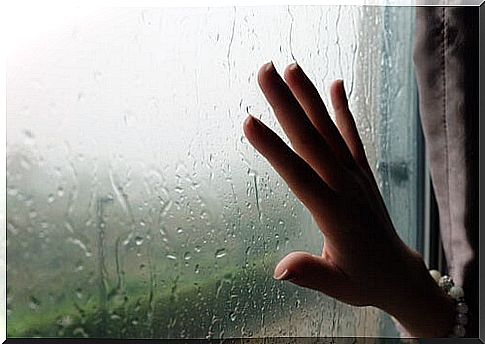Pluviophobia: Symptoms, Causes And Treatment

People who suffer from any type of phobia know that when the event that triggers it occurs they suffer great suffering, which they would appreciate avoiding. There are some – phobic stimuli – that occur very occasionally, and you can even avoid the trigger. But others, on the other hand, are very common, as is the case with pluviofobia. That is why we explain what its symptoms, causes and treatment are.
The pluviofobia is characterized because the person suffers an intense fear of everything related to the rain. That is, storms, lightning, lightning, thunder, etc. Therefore, it is a phobia that can become very disabling because the feared object can be very generalized and reproduce very frequently.
It is also called ombrophobia and its onset can occur throughout life, although it is more characteristic throughout youth and early adulthood.
Symptoms of pluviofobia
When a person suffers from a phobia, their nervous system responds as if it were exposed to a very serious threat. Depending on the degree of the phobia, it can even be equated with what our ancestors felt when an animal was chasing them or with how we would feel today if in the middle of a tunnel we anticipated that we are going to be run over by a train. Therefore, this generates a state of mind dominated by anxiety, which can turn into a panic attack.

The most common symptoms are usually hyperventilation, gastrointestinal disturbances, tachycardia, a feeling of pressure in the chest and head, dizziness, headache, breathing difficulties, etc. All this represents great suffering for the person, which in many cases causes them to take measures to avoid the stimulus.
Phobias can be the effect of the evolution of a fear, that is, starting with a small fear and evolving until we feel the same terror that we would feel when faced with a threat that we think is mortal. At the same time, the level of anxiety will also depend on the severity of the meteorological phenomenon (intensity of the phobic stimulus). It will not be the same if it is a small drizzle or a big storm.
Causes of pluviofobia
It is a type of specific phobia of this physical phenomenon, so anyone can develop it. It is not necessary to have conditions that predispose to suffer this type of psychological disturbances.
It is usually triggered by a negative experience suffered in connection with torrential rains, floods, severe storms, lightning or any particularly strong meteorological phenomenon of this type. This is indicated by the doctor in Psychology, Arturo Bados.
In these cases, the person feels very vulnerable to the force of nature. Thus, he would learn an association between certain natural phenomena, in this case related to rain, and lack of control and fear. Thus, this association would come into play each time the phobic stimulus was anticipated or produced.
Treatment of pluviofobia
The first thing to do when suffering from pluviophobia is to go to a specialist who assesses the degree of affectation suffered, the causes that trigger it and the symptoms and reactions it causes to establish which is the most recommended intervention in each case.

Generally, central intervention is based on an exposure with response prevention. They consist of exposing the person in a fictitious way to the causes and events that trigger the phobia for short periods of time marked by the specialist, which will increase at their discretion. With this exposure, it is intended that anxiety occurs and that anxiety itself begins to be reduced within the exposure itself, not allowing the person to give the avoidance response until this drop has not occurred.
Pluviofobia is one of the phobias that most affect those who suffer from it since it is impossible to isolate oneself from the factor that generates it, that is, from rain, storms and other meteorological phenomena. Therefore, the sooner it is solved, the better.









